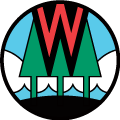Reference
- Webpage
Boat, Gear and Equipment Decontamination and Disinfection Manual Code 9183.1
The general public is required to follow the decontamination steps identified in s. NR 40.02(44) and NR 40.07 to prevent the spread of invasive species. This webpage outlines best management practices (BMPs) for the boat, gear and equipment. The…
- Webpage
Control methods
Understanding control methodsEradicating invasive species on site is an attainable goal, especially if new introductions are detected early. However, eradication may not be feasible when populations are large and pervasive. When limited resources or…
- Webpage
Permit information for Chapter NR 40 invasive species
In an effort to limit the introduction and spread of invasive species in Wisconsin, the DNR created Wisconsin's Invasive Species Identification, Classification and Control Rule, Chapter NR 40, Wis. Adm. Code, in 2009. With certain exceptions, it is…
- Webpage
Project Lists and Intended Use Plans
Find project priority lists (PPLs), intended use plans (IUPs) and funding lists by state fiscal year (SFY) for the Environmental Improvement Fund's (EIF) Clean Water Fund Program (CWFP) and Safe Drinking Water Loan Program (SDWLP).
- Webpage
Surface water grant program
Looking over the backwaters of the Mississippi River at Rush Creek State Natural Area.NR 193 rule changesThe bureaus of Water Quality and Community Financial Assistance propose to consolidate 5 related administrative code chapters governing 3 cost-…
- Webpage
Meeting minutes
2025July 8, 2025 - InfrastructureMeeting AttachmentsGrant Applications 2025-26May 9, 2025 - Audit Ad Hoc Meeting MinutesApr 22, 2025 - Joint Snowmobile and ORV
- Webpage
Meeting Agendas
2025Aug. 25-26, 2025 - CouncilMeeting AttachmentsGrant Applications 2025-26Aug.
- Webpage
Small Loans Program
Attention: The CWFP Small Loans Program is currently suspended. The DNR stopped accepting Interest Rate Subsidy Applications as of January 1, 2022. This suspension (no longer accepting new applications) will continue until the CWFP Small Loans…
- Webpage
Private Lead Service Line Replacement Program
The previous Private Lead Service Line Replacement Program, funded by the Water Infrastructure Fund Transfer Act (WIFTA), provided funding to municipalities to assist in their efforts of replacing lead service lines (LSLs) under the control of…
- Webpage
Lead Service Line Replacements
Removing lead service lines (LSLs) is one way to minimize the potential for lead to get into your drinking water. The Wisconsin DNR Bureau of Drinking Water and Groundwater provides information regarding the concerns of lead in drinking water.
